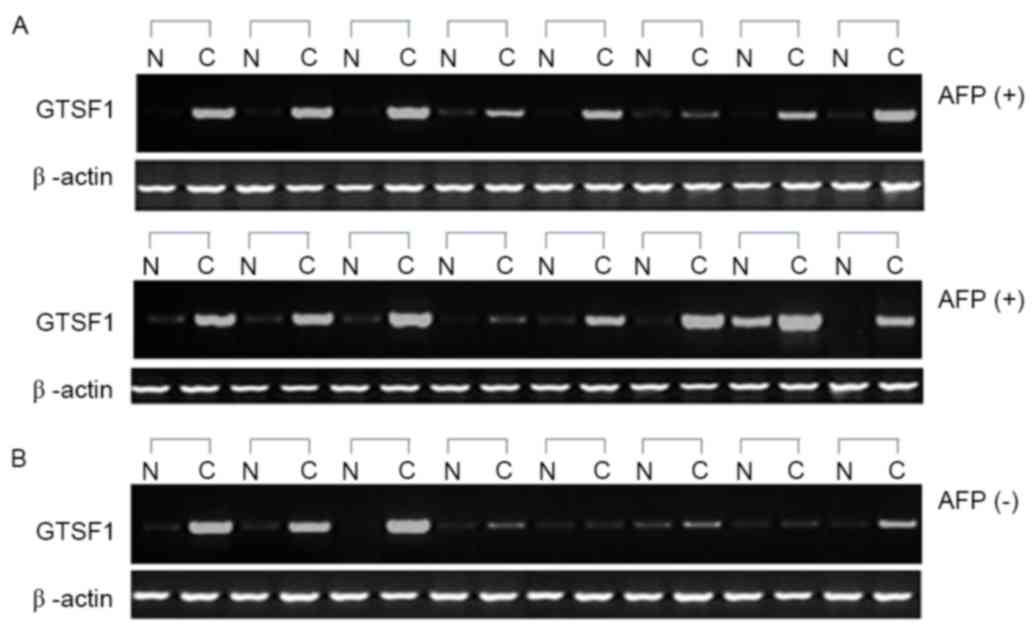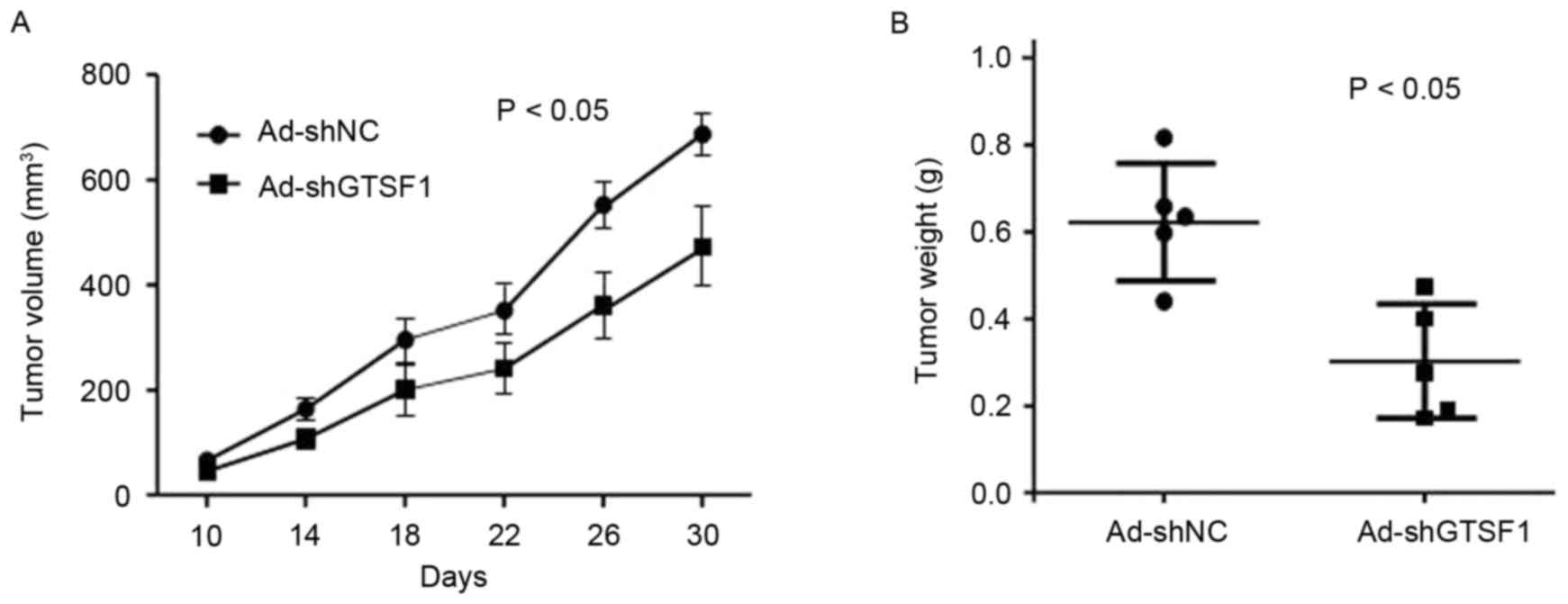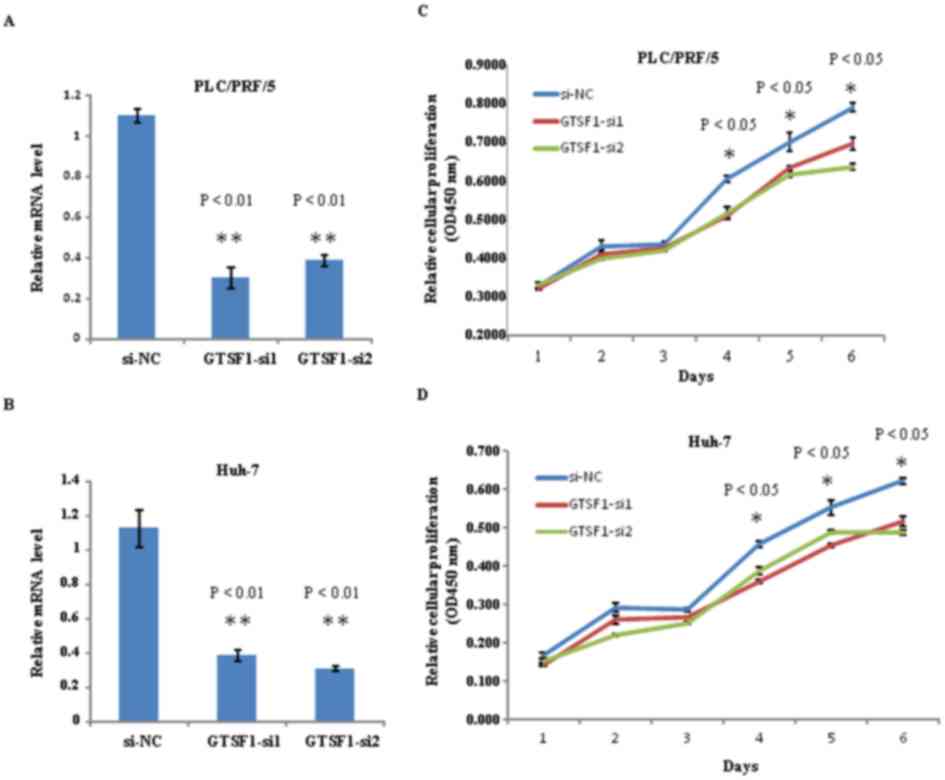|
1
|
Balogh J, Victor D III, Asham EH,
Burroughs SG, Boktour M, Saharia A, Li X, Ghobrial RM and Monsour
HP Jr.: Hepatocellular carcinoma: A review. J Hepatocell Carcinoma.
3:41–53. 2016. View Article : Google Scholar : PubMed/NCBI
|
|
2
|
Torre LA, Bray F, Siegel RL, Ferlay J,
Lortet-Tieulent J and Jemal A: Global cancer statistics, 2012. CA
Cancer J Clin. 65:87–108. 2015. View Article : Google Scholar : PubMed/NCBI
|
|
3
|
Caldwell S and Park SH: The epidemiology
of hepatocellular cancer: From the perspectives of public health
problem to tumor biology. J Gastroenterol. 44 Suppl 19:S96–S101.
2009. View Article : Google Scholar
|
|
4
|
Ferenci P, Fried M, Labrecque D, Bruix J,
Sherman M, Omata M, Heathcote J, Piratsivuth T, Kew M, Otegbayo JA,
et al: Hepatocellular carcinoma (HCC): A global perspective. J Clin
Gastroenterol. 44:239–245. 2010. View Article : Google Scholar : PubMed/NCBI
|
|
5
|
Tsuchiya N, Sawada Y, Endo I, Saito K,
Uemura Y and Nakatsura T: Biomarkers for the early diagnosis of
hepatocellular carcinoma. World J Gastroenterol. 21:10573–10583.
2015. View Article : Google Scholar : PubMed/NCBI
|
|
6
|
Zucman-Rossi J, Villanueva A, Nault JC and
Llovet JM: Genetic landscape and biomarkers of hepatocellular
carcinoma. Gastroenterology. 149:1226–1239.e4. 2015. View Article : Google Scholar : PubMed/NCBI
|
|
7
|
Yoshimura T, Toyoda S, Kuramochi-Miyagawa
S, Miyazaki T, Miyazaki S, Tashiro F, Yamato E, Nakano T and
Miyazaki J: Gtsf1/Cue110, a gene encoding a protein with two copies
of a CHHC Zn-finger motif, is involved in spermatogenesis and
retrotransposon suppression in murine testes. Dev Biol.
335:216–227. 2009. View Article : Google Scholar : PubMed/NCBI
|
|
8
|
Krotz SP, Ballow DJ, Choi Y and Rajkovic
A: Expression and localization of the novel and highly conserved
gametocyte-specific factor 1 during oogenesis and spermatogenesis.
Fertil Steril. 91(5 Suppl): S2020–S2024. 2009. View Article : Google Scholar
|
|
9
|
van Kester MS, Borg MK, Zoutman WH,
Out-Luiting JJ, Jansen PM, Dreef EJ, Vermeer MH, van Doorn R,
Willemze R and Tensen CP: A meta-analysis of gene expression data
identifies a molecular signature characteristic for tumor-stage
mycosis fungoides. J Invest Dermatol. 132:2050–2059. 2012.
View Article : Google Scholar : PubMed/NCBI
|
|
10
|
Livak KJ and Schmittgen TD: Analysis of
relative gene expression data using real-time quantitative PCR and
the 2(-Delta Delta C(T)) method. Methods. 25:402–408. 2001.
View Article : Google Scholar : PubMed/NCBI
|
|
11
|
Shimizu D, Inokawa Y, Sonohara F, Inaoka K
and Nomoto S: Search for useful biomarkers in hepatocellular
carcinoma, tumor factors and background liver factors (Review).
Oncol Rep. 37:2527–2542. 2017. View Article : Google Scholar : PubMed/NCBI
|
|
12
|
Shao YY, Hsu CH and Cheng AL: Predictive
biomarkers of antiangiogenic therapy for advanced hepatocellular
carcinoma: Where are we? Liver Cancer. 2:93–107. 2013. View Article : Google Scholar : PubMed/NCBI
|
|
13
|
Llovet JM and Bruix J: Molecular targeted
therapies in hepatocellular carcinoma. Hepatology. 48:1312–1327.
2008. View Article : Google Scholar : PubMed/NCBI
|
|
14
|
Yoshimura T, Miyazaki T, Toyoda S,
Miyazaki S, Tashiro F, Yamato E and Miyazaki J: Gene expression
pattern of Cue110: A member of the uncharacterized UPF0224 gene
family preferentially expressed in germ cells. Gene Expr Patterns.
8:27–35. 2007. View Article : Google Scholar : PubMed/NCBI
|
|
15
|
Tanabe KK, Lemoine A, Finkelstein DM,
Kawasaki H, Fujii T, Chung RT, Lauwers GY, Kulu Y, Muzikansky A,
Kuruppu D, et al: Epidermal growth factor gene functional
polymorphism and the risk of hepatocellular carcinoma in patients
with cirrhosis. JAMA. 299:53–60. 2008. View Article : Google Scholar : PubMed/NCBI
|
|
16
|
Li M, Zhao H, Zhang X, Wood LD, Anders RA,
Choti MA, Pawlik TM, Daniel HD, Kannangai R, Offerhaus GJ, et al:
Inactivating mutations of the chromatin remodeling gene ARID2 in
hepatocellular carcinoma. Nat Genet. 43:828–829. 2011. View Article : Google Scholar : PubMed/NCBI
|
|
17
|
Jin F, Xiong WJ, Jing JC, Feng Z, Qu LS
and Shen XZ: Evaluation of the association studies of single
nucleotide polymorphisms and hepatocellular carcinoma: A systematic
review. J Cancer Res Clin Oncol. 137:1095–1104. 2011. View Article : Google Scholar : PubMed/NCBI
|
|
18
|
Snowberger N, Chinnakotla S, Lepe RM,
Peattie J, Goldstein R, Klintmalm GB and Davis GL: Alpha
fetoprotein, ultrasound, computerized tomography and magnetic
resonance imaging for detection of hepatocellular carcinoma in
patients with advanced cirrhosis. Aliment Pharmacol Ther.
26:1187–1194. 2007. View Article : Google Scholar : PubMed/NCBI
|
|
19
|
Grąt M, Kornasiewicz O, Lewandowski Z,
Hołówko W, Grąt K, Kobryń K, Patkowski W, Zieniewicz K and Krawczyk
M: Combination of morphologic criteria and α-fetoprotein in
selection of patients with hepatocellular carcinoma for liver
transplantation minimizes the problem of posttransplant tumor
recurrence. World J Surg. 38:2698–2707. 2014. View Article : Google Scholar : PubMed/NCBI
|
|
20
|
Raoul JL, Park JW, Kang YK, Finn RS, Kim
JS, Yeo W, Polite BN, Chao Y, Walters I, Baudelet C and Lencioni R:
Using modified RECIST and alpha-fetoprotein levels to assess
treatment benefit in hepatocellular carcinoma. Liver Cancer.
3:439–450. 2014. View Article : Google Scholar : PubMed/NCBI
|
|
21
|
Furihata T, Sawada T, Kita J, Iso Y, Kato
M, Rokkaku K, Shimoda M and Kubota K: Serum alpha-fetoprotein level
per tumor volume reflects prognosis in patients with hepatocellular
carcinoma after curative hepatectomy. Hepatogastroenterology.
55:1705–1709. 2008.PubMed/NCBI
|
|
22
|
Zhao YJ, Ju Q and Li GC: Tumor markers for
hepatocellular carcinoma. Mol Clin Oncol. 1:593–598. 2013.
View Article : Google Scholar : PubMed/NCBI
|
|
23
|
López-Terrada D, Cheung SW, Finegold MJ
and Knowles BB: Hep G2 is a hepatoblastoma-derived cell line. Hum
Pathol. 40:1512–1515. 2009. View Article : Google Scholar
|
|
24
|
Hart SN, Li Y, Nakamoto K, Subileau EA,
Steen D and Zhong XB: A comparison of whole genome gene expression
profiles of HepaRG cells and HepG2 cells to primary human
hepatocytes and human liver tissues. Drug Metab Dispos. 38:988–994.
2010. View Article : Google Scholar : PubMed/NCBI
|
|
25
|
Wiśniewski JR, Vildhede A, Norén A and
Artursson P: In-depth quantitative analysis and comparison of the
human hepatocyte and hepatoma cell line HepG2 proteomes. J
Proteomics. 136:234–247. 2016. View Article : Google Scholar : PubMed/NCBI
|
|
26
|
Capes-Davis A, Theodosopoulos G, Atkin I,
Drexler HG, Kohara A, MacLeod RA, Masters JR, Nakamura Y, Reid YA,
Reddel RR and Freshney RI: Check your cultures! A list of
cross-contaminated or misidentified cell lines. Int J Cancer.
127:1–8. 2010. View Article : Google Scholar : PubMed/NCBI
|
|
27
|
Cevik D, Yildiz G and Ozturk M: Common
telomerase reverse transcriptase promoter mutations in
hepatocellular carcinomas from different geographical locations.
World J Gastroenterol. 21:311–317. 2015. View Article : Google Scholar : PubMed/NCBI
|
|
28
|
Srisomsap C, Sawangareetrakul P,
Subhasitanont P, Chokchaichamnankit D, Chiablaem K, Bhudhisawasdi
V, Wongkham S and Svasti J: Proteomic studies of cholangiocarcinoma
and hepatocellular carcinoma cell secretomes. J Biomed Biotechnol.
2010:4371432010. View Article : Google Scholar : PubMed/NCBI
|
|
29
|
Wadee AA, Paterson A, Coplan KA and Reddy
SG: HLA expression in hepatocellular carcinoma cell lines. Clin Exp
Immunol. 97:328–333. 1994. View Article : Google Scholar : PubMed/NCBI
|
|
30
|
Dapas B, Farra R, Grassi M, Giansante C,
Fiotti N, Uxa L, Rainaldi G, Mercatanti A, Colombatti A, Spessotto
P, et al: Role of E2F1-cyclin E1-cyclin E2 circuit in human
coronary smooth muscle cell proliferation and therapeutic potential
of its downregulation by siRNAs. Mol Med. 15:297–306. 2009.
View Article : Google Scholar : PubMed/NCBI
|
|
31
|
Farra R, Dapas B, Pozzato G, Giansante C,
Heidenreich O, Uxa L, Zennaro C, Guarnieri G and Grassi G: Serum
response factor depletion affects the proliferation of the
hepatocellular carcinoma cells HepG2 and JHH6. Biochimie.
92:455–463. 2010. View Article : Google Scholar : PubMed/NCBI
|
|
32
|
Spänkuch B and Strebhardt K: Combinatorial
application of nucleic acid-based agents targeting protein kinases
for cancer treatment. Curr Pharm Des. 14:1098–1112. 2008.
View Article : Google Scholar : PubMed/NCBI
|
|
33
|
Farra R, Grassi M, Grassi G and Dapas B:
Therapeutic potential of small interfering RNAs/micro interfering
RNA in hepatocellular carcinoma. World J Gastroenterol.
21:8994–9001. 2015. View Article : Google Scholar : PubMed/NCBI
|

















